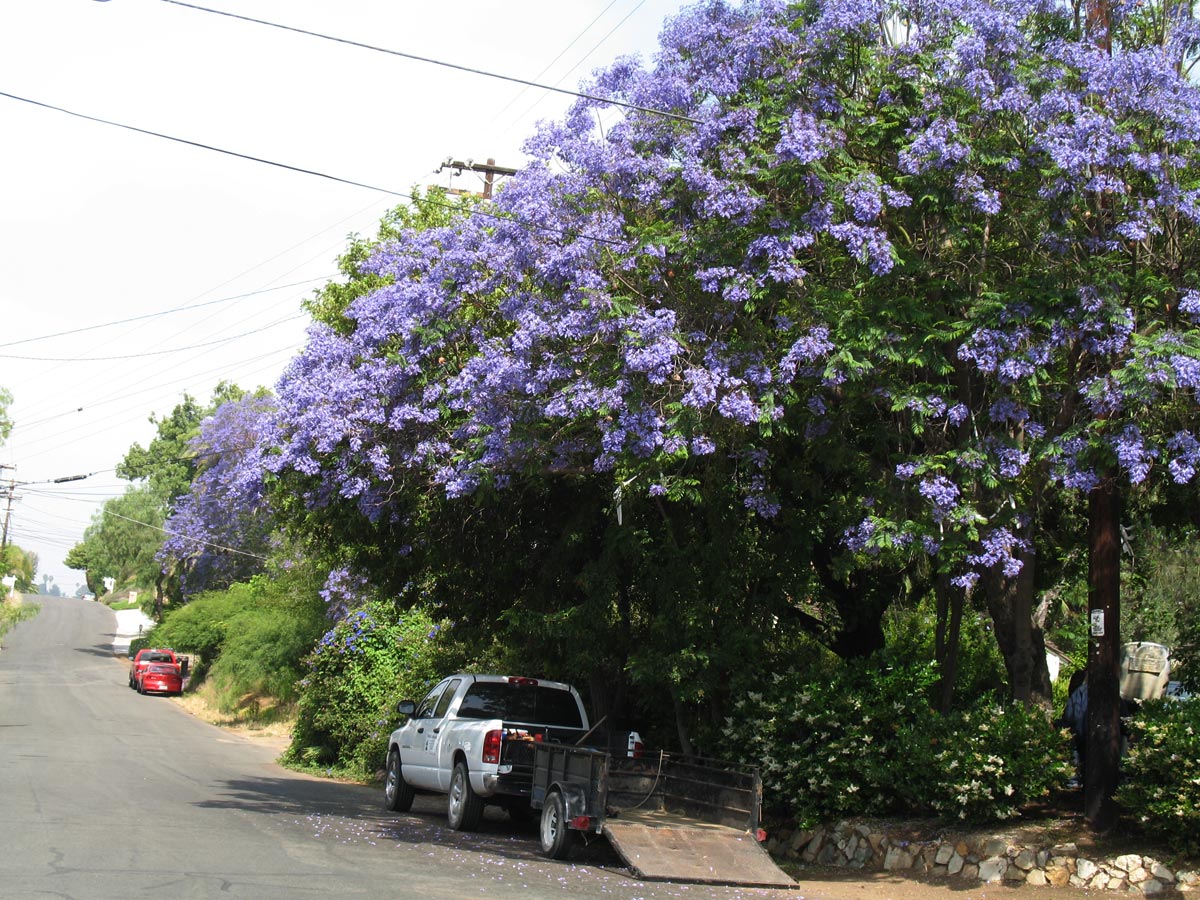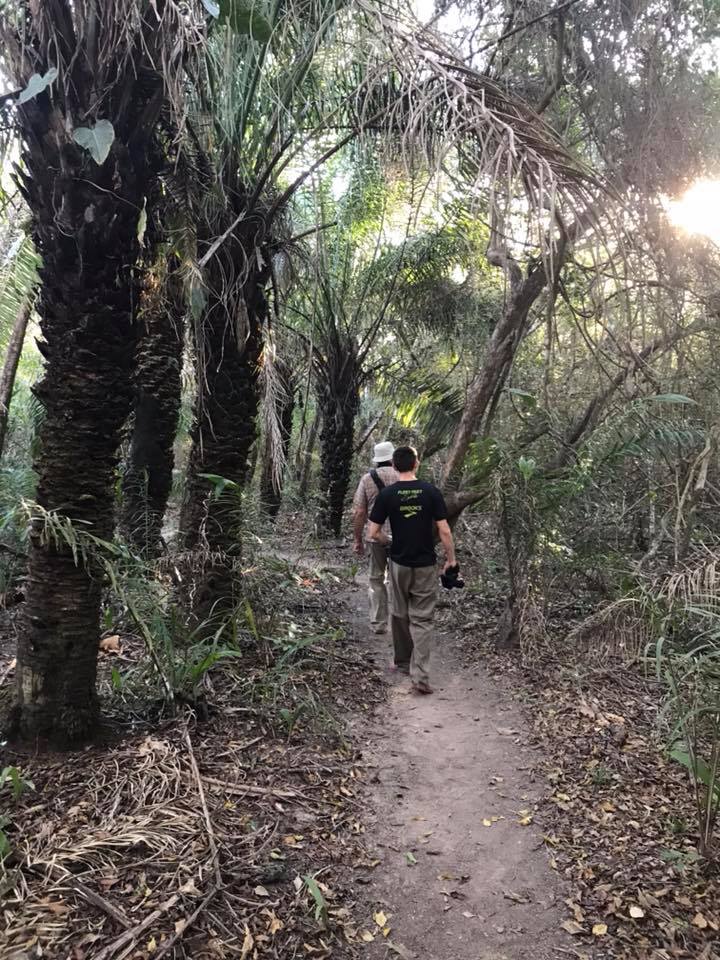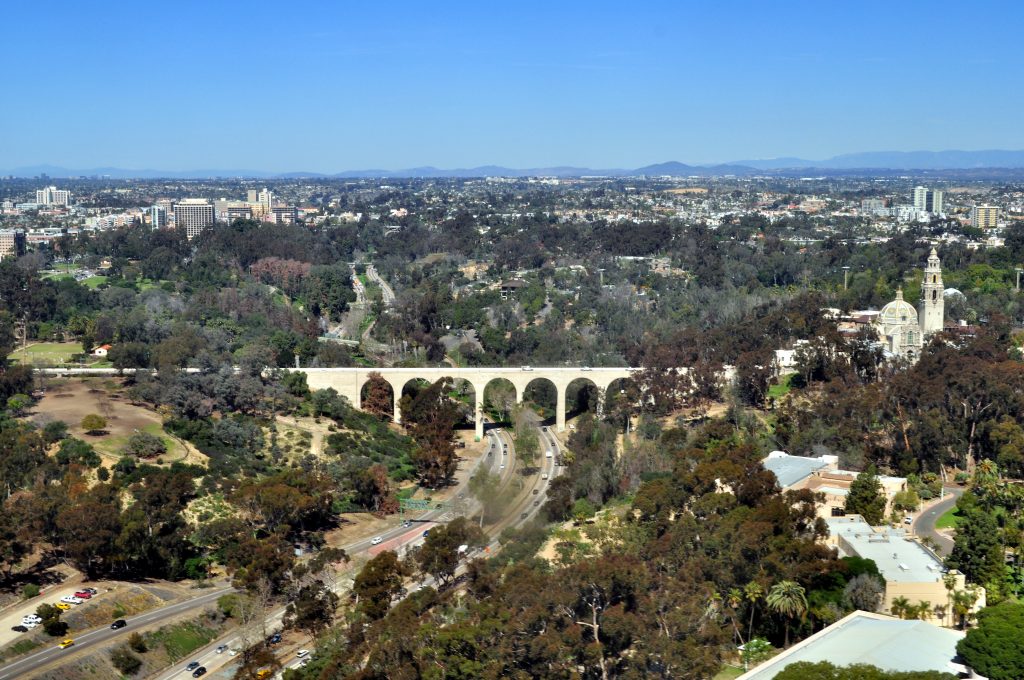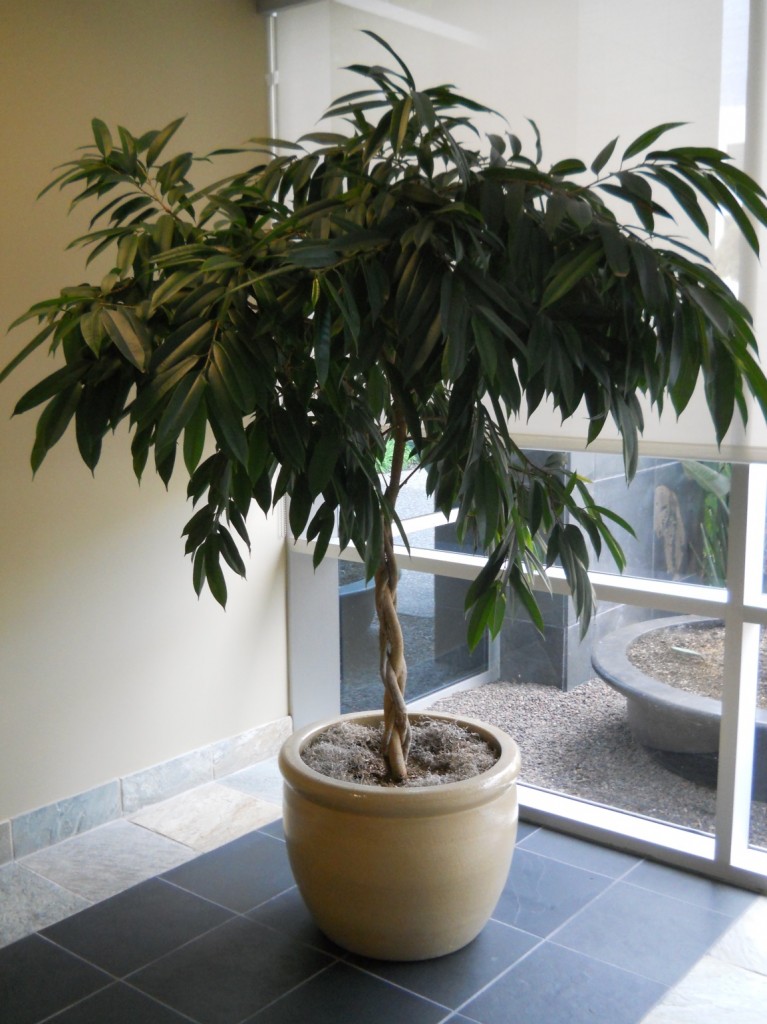In a previous life, I must have been some kind of animal that lives in a tree. I love all things trees. I always have. One of the very first blog posts I ever wrote was about the magic of tree houses in September 2013.
Trees are at the top of my consciousness right now following my vacation trip to the Pantanal region of Brazil. It’s such a different experience being immersed in dense forests of trees, especially the amazing and unusual types of trees we saw in Brazil.
Back at home in San Diego, I’ve been thinking just how valuable trees are to us in our hot, dry Mediterranean climate. We just experienced the hottest August ever on record. Fighting climate change is a big job, but trees can do a lot of the work. The evapotranspiration from trees cools the ambient temperature down. This is much like how our bodies sweat to cool us down.
The species of tree really doesn’t matter. All trees are nature’s superheroes. Lions aren’t really the kings of the jungle. Trees are.
Whatever we can do as individuals and as communities to plant more trees should be near the top of our priority list. Fixing potholes is important, I hit plenty of them. But I’d love to hear more people mention the need to plant trees, and would like more money from our government budgets spent on trees.
Some time ago I was looking to buy a home in the Clairemont area of San Diego. When I was driving around, I wondered – “it’s an older neighborhood, where are all the mature street trees?” When I found the answer I was stunned. Apparently, back in the 1970s, the city decided it was cheaper to cut hem down than maintain them. UGH
Every dollar spent on planting and caring for trees produces an impressive return. I couldn’t possibly list all of their benefits, but here are just a few of the ways trees improve our quality of life.
A tree is a natural air conditioner. The evaporation from a single tree can produce the cooling effect of ten room-size, residential air conditioners operating 20 hours a day.
Carbon dioxide, or CO2, is one of the main contributors to the greenhouse gases that are causing climate change. One average sized 30-foot tall tree can store hundreds of pounds of CO2 over its lifetime.
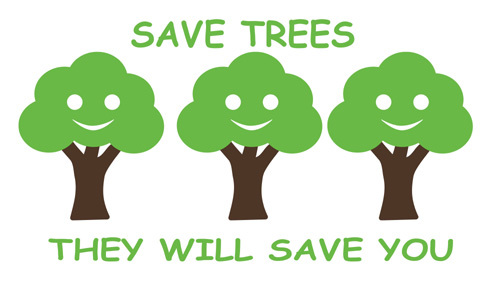 Tree windbreaks can reduce residential heating costs 10 to 15 percent. Shading and evaporative cooling from trees can cut residential air-conditioning costs 20 to 50 percent. Take a look at your air conditioning bill this summer and think about cutting it back that much!
Tree windbreaks can reduce residential heating costs 10 to 15 percent. Shading and evaporative cooling from trees can cut residential air-conditioning costs 20 to 50 percent. Take a look at your air conditioning bill this summer and think about cutting it back that much!
Trees absorb and block sound, reducing noise pollution by as much as 40 percent.
Urban landscaping, including trees, helps lower crime rates. Where there is a large tree canopy providing shade, apartments and offices rent more quickly and have a higher occupancy rate. This boosts our local economy. Their workers also report more productivity just having the trees outside.
In commercial districts, trees promote economic stability by attracting businesses. People linger and shop longer when trees are present. Sales taxes help pay for our government services.
Trees produce oxygen, intercept airborne particulates, and reduce smog, enhancing a community’s respiratory health. The urban canopy directly contributes to meeting a city’s regulatory clean air requirements. Evergreen trees planted in rows can capture up to 85 percent of the particulate air pollution blowing through their branches.
Trees provide inviting and cool areas for recreation and relaxation such as playgrounds and parks. We have a perfect example right in the middle of San Diego. One of our greatest civic attractions is Balboa Park, full of beautiful trees planted by visionaries like Kate Sessions a century ago. Learn more about Sessions in this “About San Diego” video from another local tree lover, Ken Kramer.
Residential neighborhoods benefit from trees, too. In addition to a cleaner, cooler environment and energy cost savings, homes landscaped with trees are worth five to 15 percent more than homes without trees. In San Diego County, that’s a lot of money. If your whole street is lined with trees, it could be 25 percent more.
People walk and jog more on shaded streets, which encourages interaction with neighbors and improves the sense of community. It also creates a much safer neighborhood due to all of the interaction and the opportunity to observe what’s going on.
There are several non-profit organizations that promote trees: treesandiego.org, peoplefortrees.com and treepeople.org.
California street trees alone save the amount of electricity it would take to air condition 530,000 households every year. But the number of street trees in California is running behind population growth. Street trees make up 10 percent to 20 percent of the state’s total urban forest. Tree density has declined 30 percent since 1988 as cities have added more streets than trees. Tree density fell from 105.5 trees per mile to 75 trees per mile in this period.
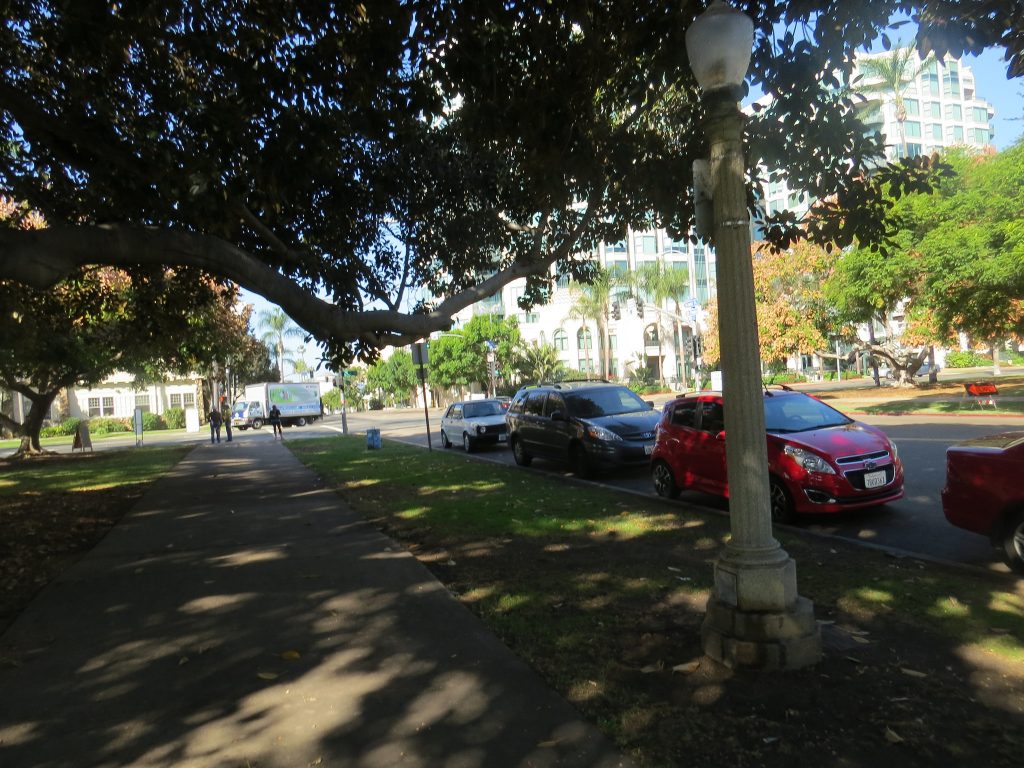
Beautiful mature streets treets on Sixth Avenue across from Balboa Park. Photo: Andy Nystrom, Flickr/Creative Commons License
Recently the City of Poway faced a crisis with thousands of its trees. It was running out of budget money to pay for irrigation and maintenance. Thankfully the city council decided to spend some emergency funds to take care of the trees through next June, the end of the fiscal year.
In the meantime, the city is putting together a volunteer citizens committee to brainstorm more permanent solutions to the tree problem. If you live in Poway and have interest, contact your elected representative or the city manager in Poway.
Studies show that urban vegetation slows heartbeats, lowers blood pressure, and relaxes brain wave patterns. Access to trees, green spaces, and parks promotes greater physical activity, and reduces stress.
If we haven’t convinced you yet of all the super powers of trees, how about this: scientists believe trees actually ‘talk’ to each other.
I had a small treehouse when I was a kid. It wasn’t level, no walls or roof and wasn’t safe. But I made it myself with lumber scraps I collected and built it without the aid of construction skills, an architect or engineer. Maybe it’s not too late to get a “real” treehouse?
If you want help putting a tree in your house, or even office, give us a call. We specialize in house trees and office trees!

